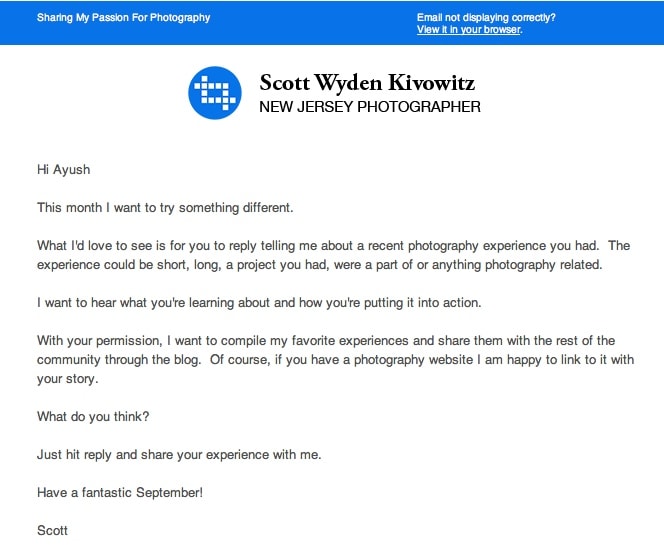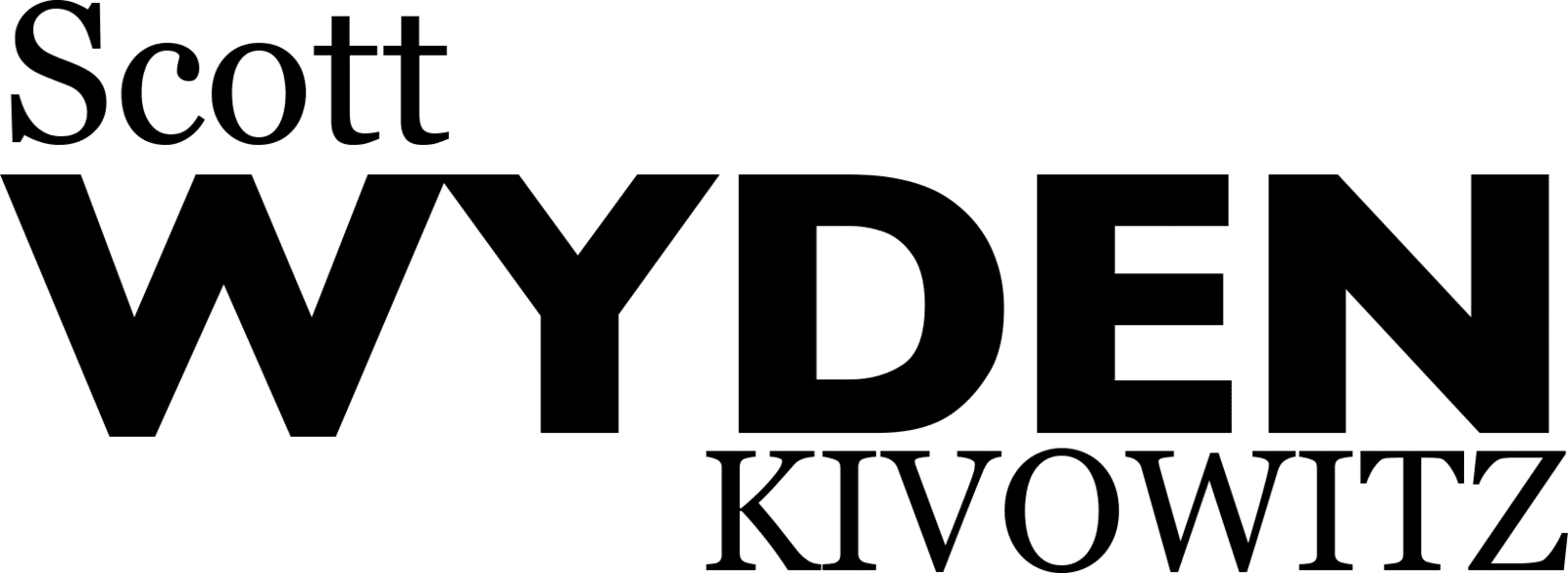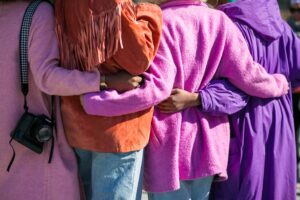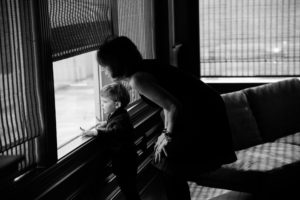Sometimes the best way to learn about your community and customers are to ask questions. That is why I sent out an email to my community asking them to share something about themselves, their photography or anything that I do not know.
I wanted to understand my community better, and email was one of the best ways to go about it efficiently.
There were a few reasons for this. The first was to understand where they come from, who they are and what they do. The second was to find out if they might be interested in learning about something that I haven’t already created a video for or blogged about. The third reason was to create this blog article. To educate others on how they can learn about their community, and to share some of the great replies I received from one very simple email.
My email went out on a Wednesday morning at 9am EST. This was the bulk of the email:

Within minutes I started receiving replies, and they’re fantastic.
How To Learn About Your Community
Want to see some of the replies?
Hi Scott,
Thank you for the email. This is indeed a different thing to try out. I guess I started pursuing my interest photography seriously since 2008. I would still be taking photos before that. But since 2008, I have made it a point to step outside my home with my camera, although this discounts my daily work commutes. In the past couple of years, I have been engaged in some some paid and pro-bono photographic assignments. In fact, I compose this mail right after having returned from an informal (pro-bono) photoshoot for an oranization that provides subsidized health care to the economically challenged. My role in this shoot is to take photos that will go on to document their progress for the annual report as well as desktop/wall calendars.
This particular project is different from my typical photos taken on business/vacation trips, as it focuses on certain disorders, the human reactions to it and the involved documentation of it all. In some cases, my subjects were patients who were undergoing treatment and graciously consented to be photographed. As a photographer, I was not in control of the situations; the lighting, the medical equipment, the very real and valid constraints of the subjects, etc. It was certainly an experience that sensitized me. While I have learned from this experience, I also hope my contributions helped this organization in some way.
Warm regards,
Ayush Basu
What did I learn from Ayush? My community is not full of professional photographers working every day on paid assignments. In fact, some of them care so much about other people that they donate their time for amazing causes.
My story is not very interesting
I’m a painter (artist) and started with photography to enjoy more of the walks with my dog (because I always saw something funny, nice, interesting, or simply conserve momentum). With a little low-end compact, which I always carry in my pocket, I’ve been practicing. Now, I like, photography, and I think I will give the next step and look for a reflex (for amateurs) to try to give more and better quality to my pictures.
If you want to see my photos (Google+ : Eli Salvans)
What did I learn from Eli? My community expands beyond just photography. There are all sorts of artists reading my content. Why? Because photography is art, and when talking about one type of art bleeds over to others. Eli is also considering a beginner DSLR, so a potential future article or video might be recommendations on what to look for in a beginner DSLR or mirrorless camera.
I recently did something I’d never done before.
As you know I’m a part-time photographer. My day (job involves helping organizations) who are struggling/frustrated with maintaining the security of their computer systems and applications. Although I make a side income shooting portraits, photography is mostly a hobby for me.
However, in June I had the opportunity to stretch myself and put my skills on the line. I volunteered to do portraits for members of the Professional Services Group of Mercer County at the Princeton Public Library. My career was in transition and I had joined the group looking for networking opportunities and consulting leads. I stuck up a conversation with one of the groups organizers about helping out on the Information Technology Committee. She mentioned they were looking for a photographer to do some head shots for the membership and asked me if knew of anyone. Ha!
We went back and forth and finalized on a date in June for the shoot. Of course the available date at the library was also the same day I had registered for a photo excursion to Grand Central Station in New York. I only had 6 hours and that included a break for lunch.
I worked out a schedule that would allow me to photograph 18 people with about 15 minutes per person. Fifteen minutes would give me enough time to greet each person, go over the details of what we would be doing, get releases signed, take the photos, etc. I also needed to work out logistics for the day of the shoot. I needed to be at the library and setup before my “customers” arrived and I needed time to pack up and make my train to Manhattan. The photo shoot was scheduled for 9AM and the library opened at 9AM. I managed to get in 30 minutes early for setup. Whew! Planning, planning, planning!
I made a list of everything I would need for the shoot — strobes, umbrellas, light meter, strobe remote triggers, power extension cord, a stool (bought two nights before at Target), camera, memory card, backup memory card, battery, backup battery, lens cleaner, iPad pen for digitally signing the photo release, iPad. I also made sure to set up a registration page on Eventbrite. This provided me a way to keep track of who I would be shooting when. On the Eventbrite page I made sure to explain what the subject could expect. I even included tips on how to dress and groom for the shoot. I tried to think of everything that would be involved in a successful shoot.
My son volunteered to help out with greeting people and getting them signed in. We used ASMP Releases for the model release. The software had some glitches so we switched to another app, Easy Release. The software allowed me to take photos of each subject and get a signature before each shoot. A signed PDF was immediately emailed.
The photo shoot was over quicker than I expected. I had a lot of fun and learned quite a bit about the amount of work a photographer has to put into every shoot. Of course, shooting the photos is only a small part of the actual work involved. It took me another four weeks to get all the photos post processed in Portrait Professional and Adobe Lightroom.
Khürt
What did I learn from Khürt? There are people in my community who spend most of their days in other fields. In fact, some are in a completely different field unrelated to art. However, there are some who try to make money from photography when they can and also those who just want to give back. I also learned that my community embraces technology for simple tasks like model releases. I also use Easy Release as it saves time, is less paperwork and just more efficient overall.
Learn About Your Community & From Your Community
So there you have it, a simple way to learn about your community and from your community. Send a personal email asking them a question and don’t try to squeeze many questions into one email. Keep it simple. Learn, improve, teach, rinse, repeat.
Thanks for reading,
Scott



